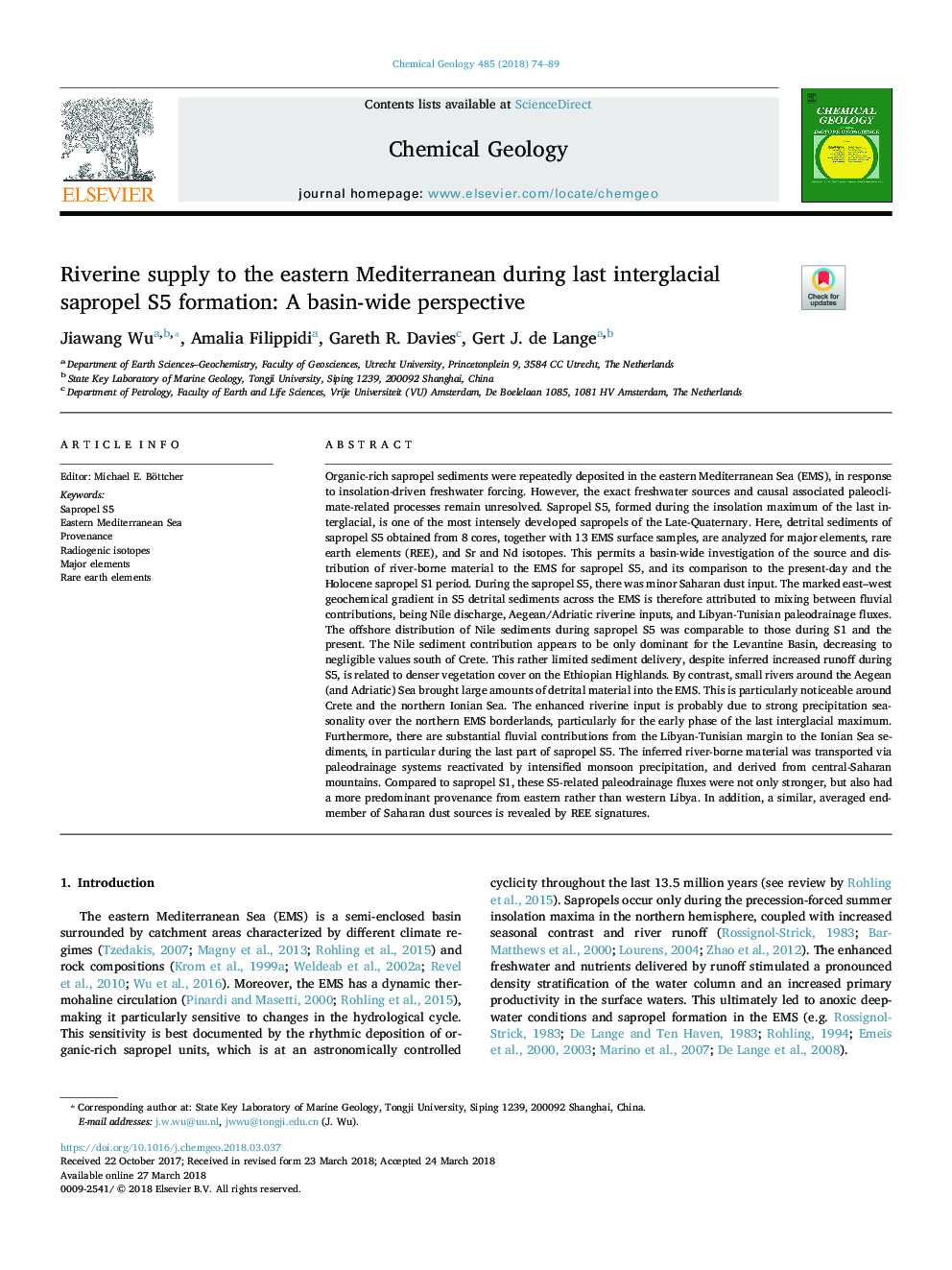| کد مقاله | کد نشریه | سال انتشار | مقاله انگلیسی | نسخه تمام متن |
|---|---|---|---|---|
| 8910240 | 1637489 | 2018 | 16 صفحه PDF | دانلود رایگان |
عنوان انگلیسی مقاله ISI
Riverine supply to the eastern Mediterranean during last interglacial sapropel S5 formation: A basin-wide perspective
دانلود مقاله + سفارش ترجمه
دانلود مقاله ISI انگلیسی
رایگان برای ایرانیان
کلمات کلیدی
موضوعات مرتبط
مهندسی و علوم پایه
علوم زمین و سیارات
ژئوشیمی و پترولوژی
پیش نمایش صفحه اول مقاله

چکیده انگلیسی
Organic-rich sapropel sediments were repeatedly deposited in the eastern Mediterranean Sea (EMS), in response to insolation-driven freshwater forcing. However, the exact freshwater sources and causal associated paleoclimate-related processes remain unresolved. Sapropel S5, formed during the insolation maximum of the last interglacial, is one of the most intensely developed sapropels of the Late-Quaternary. Here, detrital sediments of sapropel S5 obtained from 8 cores, together with 13 EMS surface samples, are analyzed for major elements, rare earth elements (REE), and Sr and Nd isotopes. This permits a basin-wide investigation of the source and distribution of river-borne material to the EMS for sapropel S5, and its comparison to the present-day and the Holocene sapropel S1 period. During the sapropel S5, there was minor Saharan dust input. The marked east-west geochemical gradient in S5 detrital sediments across the EMS is therefore attributed to mixing between fluvial contributions, being Nile discharge, Aegean/Adriatic riverine inputs, and Libyan-Tunisian paleodrainage fluxes. The offshore distribution of Nile sediments during sapropel S5 was comparable to those during S1 and the present. The Nile sediment contribution appears to be only dominant for the Levantine Basin, decreasing to negligible values south of Crete. This rather limited sediment delivery, despite inferred increased runoff during S5, is related to denser vegetation cover on the Ethiopian Highlands. By contrast, small rivers around the Aegean (and Adriatic) Sea brought large amounts of detrital material into the EMS. This is particularly noticeable around Crete and the northern Ionian Sea. The enhanced riverine input is probably due to strong precipitation seasonality over the northern EMS borderlands, particularly for the early phase of the last interglacial maximum. Furthermore, there are substantial fluvial contributions from the Libyan-Tunisian margin to the Ionian Sea sediments, in particular during the last part of sapropel S5. The inferred river-borne material was transported via paleodrainage systems reactivated by intensified monsoon precipitation, and derived from central-Saharan mountains. Compared to sapropel S1, these S5-related paleodrainage fluxes were not only stronger, but also had a more predominant provenance from eastern rather than western Libya. In addition, a similar, averaged endmember of Saharan dust sources is revealed by REE signatures.
ناشر
Database: Elsevier - ScienceDirect (ساینس دایرکت)
Journal: Chemical Geology - Volume 485, 10 May 2018, Pages 74-89
Journal: Chemical Geology - Volume 485, 10 May 2018, Pages 74-89
نویسندگان
Jiawang Wu, Amalia Filippidi, Gareth R. Davies, Gert J. de Lange,